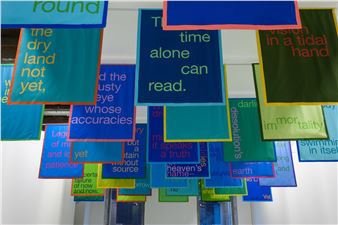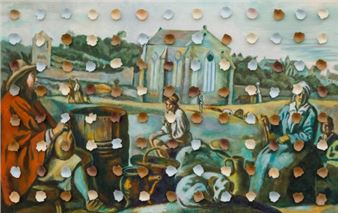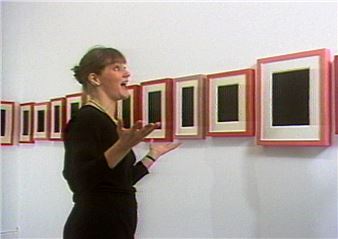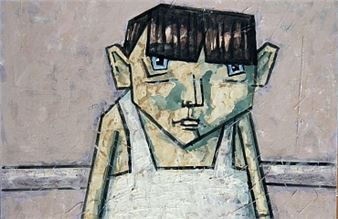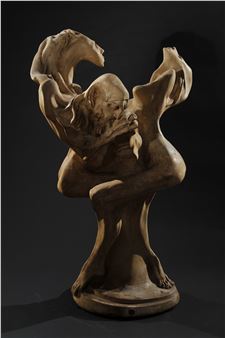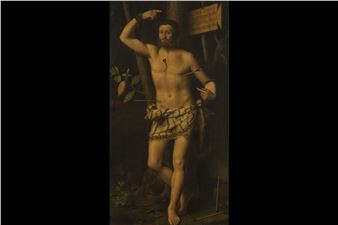Ilya and Emilia Kabakov: Monument to a Lost Civilization
вҖАбұфІвІ№ Kabakov is perhaps the only Russian artist of the second half of the 20th century to have become a generally acknowledged world great. Ilya and Emilia Kabakov were all but the only people in the Western world to speak out publicly against breaking ties with Russian cultural institutions. In the General Staff building the total installation devoted to Soviet civilization has consonances with the displays devoted to the history of the previous вҖ“ imperial вҖ“ Russian civilization. Its protagonist, however, is the little man, the successor to personages from Gogol and Dostoyevsky,вҖқ Mikhail Piotrovsky, General Director of the State Hermitage, commented.
Ilya and Emilia Kabakov are famous Conceptualist artists who have gone down in history as the creators of a new genre вҖ“ the total installation. It is an artistic space filled with a specific atmosphere, a separate environment in which everything вҖ“ not just individual objects, but also their surroundings, the colour and configuration of the walls, lighting, sound and smells вҖ“ takes on fresh meanings and serves to intensify the image devised by the creators.
The total installation вҖңMonument to a Lost CivilizationвҖқ became one of the largest in the KabakovsвҖҷ oeuvre. It was produced and first shown by its creators in Palermo in 1999. The total installation takes the form of the design for a utopian museum-city, something of which the artists had dreamed for many years. It was conceived as a memorial to the civilization in which they were born and spent the greater part of their lives вҖ“ the Union of Soviet Socialist Republics. Like archaeologists, the Kabakovs collected, described and systematized вҖңshardsвҖқ of that no longer extant civilization in their full-scale installations. Drawing on their personal experience and recollections, they designed their museum in such a way that, wandering through its various installation-rooms, viewers who had never seen that civilization would be able to form their own conception of it.
The installation presented in the exhibition contains detailed blueprints, layouts and pictorial impressions of this unrealized вҖңsuper-totalвҖқ museum-installation. In the centre of the hall there are models of it: an inside and outside view. Around those are eight showcases containing a description of the overall structure of the museum and its separate sections. Each installation-room has a corresponding stand hung on the walls of the hall. The artists did indeed construct many of those installations over the years as separate works, and today they can be found in museum collections all around the world. In the General Staff building, for example, visitors can see two installations from the lineup for the utopian вҖңMonument to a Lost CivilizationвҖқ: Life in the Cupboard and Toilet in the Corner.
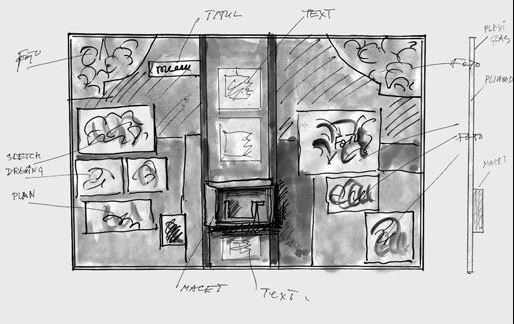
Recommended for you
вҖАбұфІвІ№ Kabakov is perhaps the only Russian artist of the second half of the 20th century to have become a generally acknowledged world great. Ilya and Emilia Kabakov were all but the only people in the Western world to speak out publicly against breaking ties with Russian cultural institutions. In the General Staff building the total installation devoted to Soviet civilization has consonances with the displays devoted to the history of the previous вҖ“ imperial вҖ“ Russian civilization. Its protagonist, however, is the little man, the successor to personages from Gogol and Dostoyevsky,вҖқ Mikhail Piotrovsky, General Director of the State Hermitage, commented.
Ilya and Emilia Kabakov are famous Conceptualist artists who have gone down in history as the creators of a new genre вҖ“ the total installation. It is an artistic space filled with a specific atmosphere, a separate environment in which everything вҖ“ not just individual objects, but also their surroundings, the colour and configuration of the walls, lighting, sound and smells вҖ“ takes on fresh meanings and serves to intensify the image devised by the creators.
The total installation вҖңMonument to a Lost CivilizationвҖқ became one of the largest in the KabakovsвҖҷ oeuvre. It was produced and first shown by its creators in Palermo in 1999. The total installation takes the form of the design for a utopian museum-city, something of which the artists had dreamed for many years. It was conceived as a memorial to the civilization in which they were born and spent the greater part of their lives вҖ“ the Union of Soviet Socialist Republics. Like archaeologists, the Kabakovs collected, described and systematized вҖңshardsвҖқ of that no longer extant civilization in their full-scale installations. Drawing on their personal experience and recollections, they designed their museum in such a way that, wandering through its various installation-rooms, viewers who had never seen that civilization would be able to form their own conception of it.
The installation presented in the exhibition contains detailed blueprints, layouts and pictorial impressions of this unrealized вҖңsuper-totalвҖқ museum-installation. In the centre of the hall there are models of it: an inside and outside view. Around those are eight showcases containing a description of the overall structure of the museum and its separate sections. Each installation-room has a corresponding stand hung on the walls of the hall. The artists did indeed construct many of those installations over the years as separate works, and today they can be found in museum collections all around the world. In the General Staff building, for example, visitors can see two installations from the lineup for the utopian вҖңMonument to a Lost CivilizationвҖқ: Life in the Cupboard and Toilet in the Corner.
Artists on show
Contact details


 ARTISTS
ARTISTS









